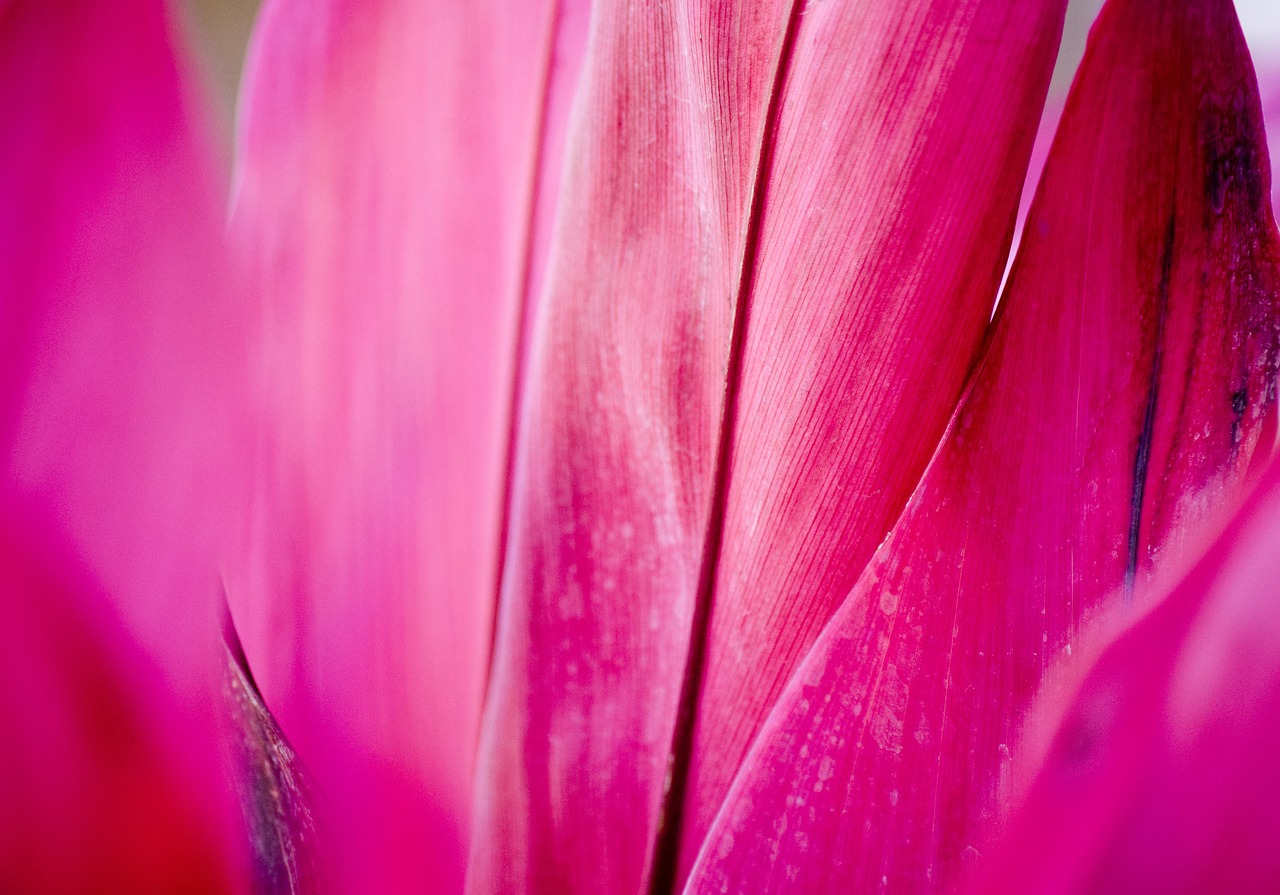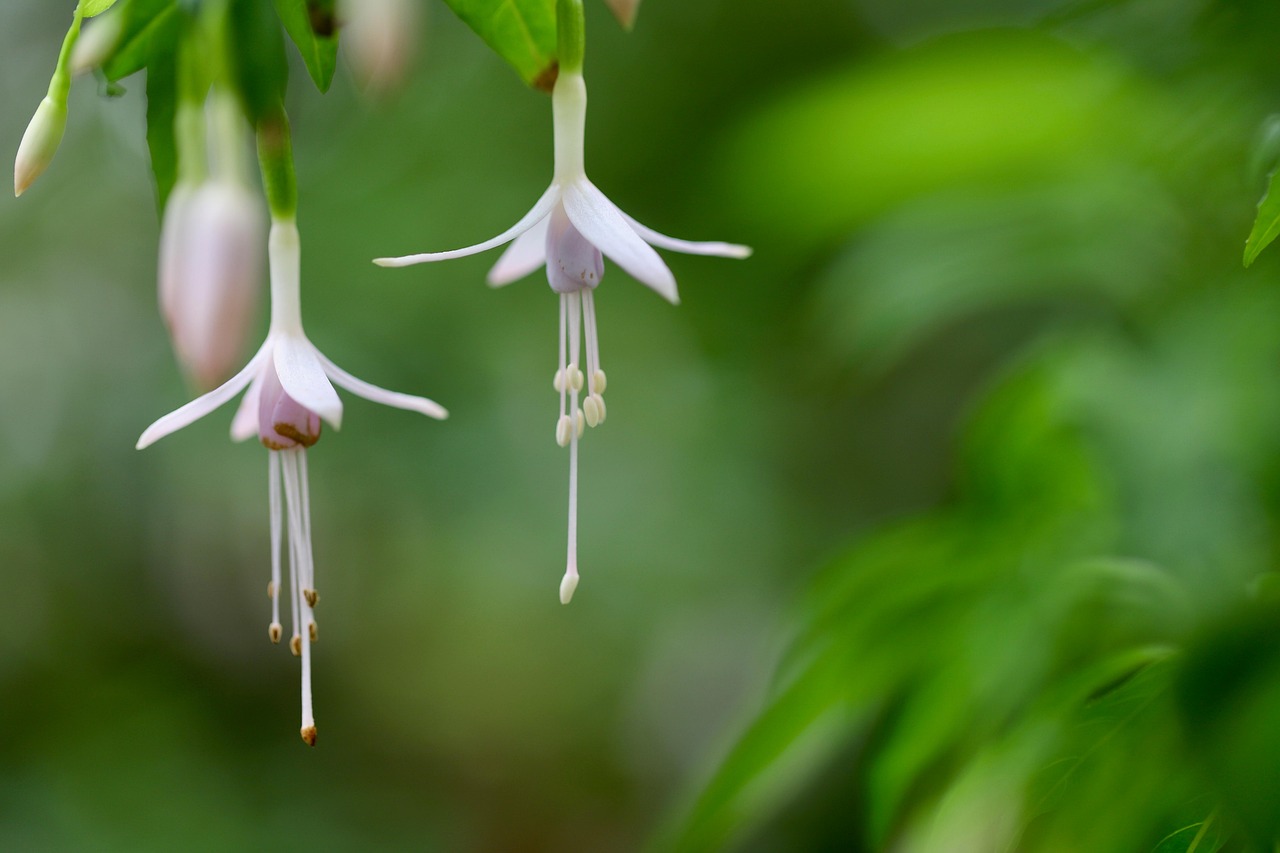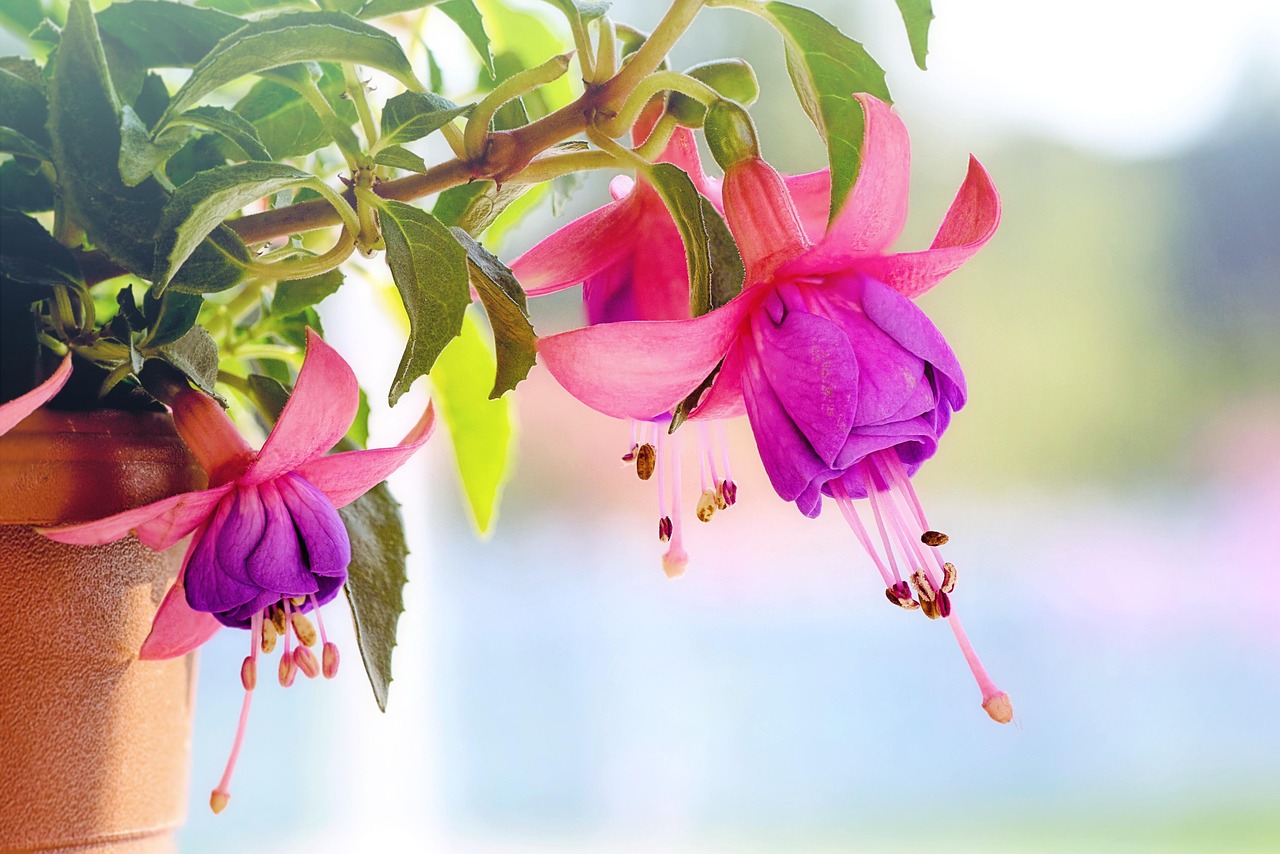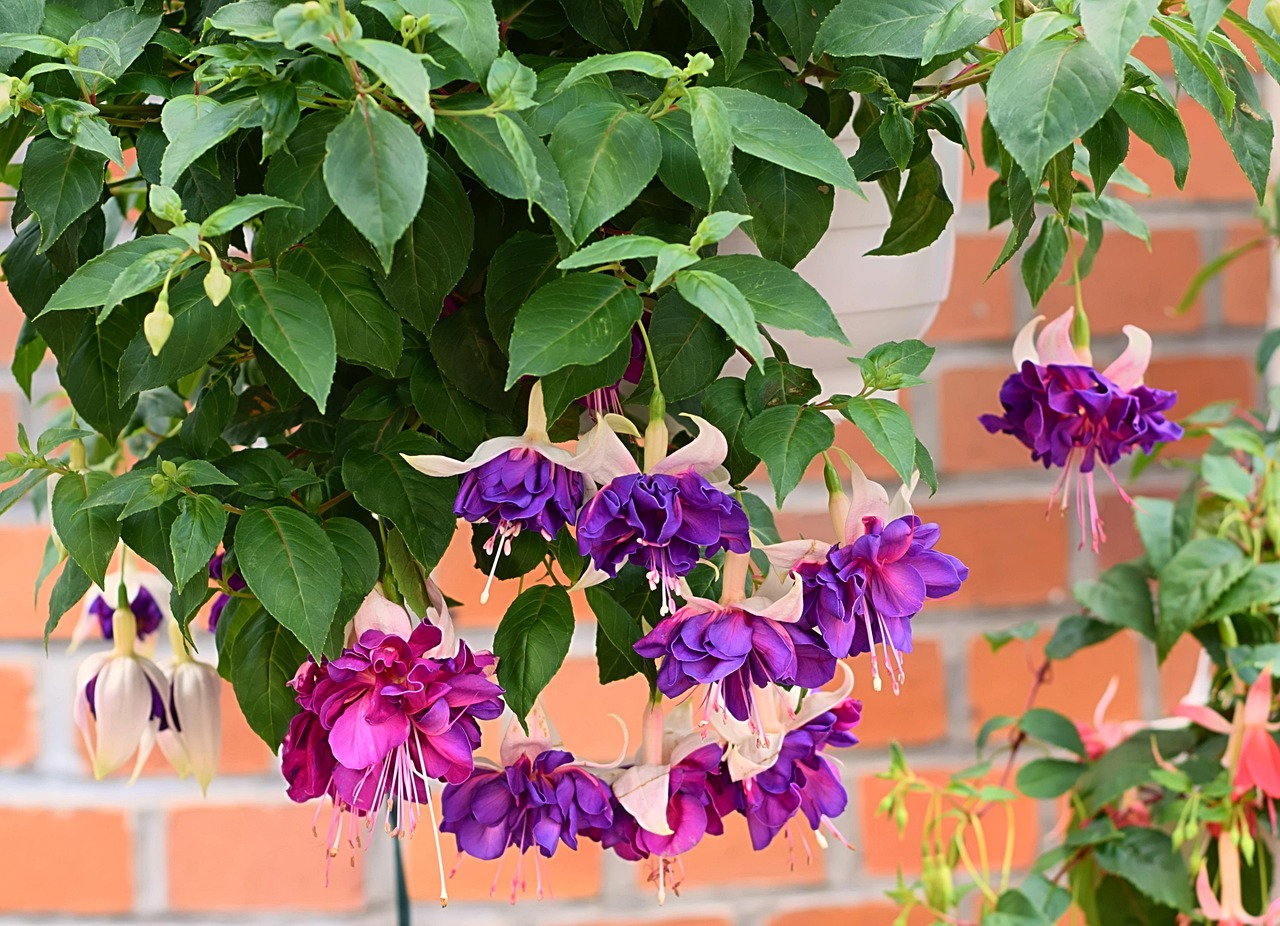Fuchsia is commonly classified as a perennial plant in most climates. However, it can behave as an annual in colder areas where temperatures drop significantly, preventing it from surviving the winter.
Understanding Fuchsia Growth
Fuchsia is a popular flowering plant known for its vibrant, pendulous blooms. With over 100 species and numerous hybrids, these plants are versatile and can enhance any garden. Understanding whether fuchsia is an annual or a perennial is essential for successful cultivation. This knowledge helps gardeners plan their planting and care effectively.

In general, fuchsia plants are classified as perennials in USDA hardiness zones 10 and above. In these warmer climates, fuchsias can thrive year-round, returning each spring. However, in cooler areas, they often act as annuals due to the inability to survive freezing temperatures.
Gardeners should be aware of these differences depending on their location. The climate plays a significant role in determining how fuchsia plants will grow. In regions with mild winters, fuchsia can grow back from the roots each season. Conversely, in areas with harsh winters, the plants might need to be planted anew each year.
Factors Influencing Growth
Several factors influence whether fuchsia will behave as an annual or perennial. These include:

- Climate Zone: The USDA hardiness zone determines how cold a region gets in winter.
- Soil Conditions: Well-drained soil is crucial for root health.
- Watering Practices: Overwatering can lead to root rot, while insufficient watering can stress the plant.
- Sunlight Exposure: Fuchsias prefer partial shade to full sun but can struggle in extreme heat.
Perennial Characteristics
When grown as perennials, fuchsias display specific characteristics that make them appealing for long-term gardening:
- Long-Lasting Blooms: Many perennial fuchsias bloom from late spring to early fall.
- Diverse Varieties: There are numerous species and hybrids available that offer a range of colors and sizes.
- Hardiness: Perennial fuchsias are generally more resistant to pests and diseases.
Annual Characteristics
In contrast, when treated as annuals, fuchsias exhibit different traits:
- Short Lifespan: Annual fuchsias typically complete their life cycle within one growing season.
- Rapid Growth: These plants tend to grow quickly and produce blooms sooner than their perennial counterparts.
- Varied Cultivation: They often require different care strategies than perennials, especially in terms of watering and fertilization.
Caring for Fuchsia Plants
The care requirements for fuchsia plants can vary based on whether they are grown as annuals or perennials. Here are essential care tips:

| Caring Aspect | Annual Care | Perennial Care |
|---|---|---|
| Watering | Regularly water to keep soil moist but not soggy. | Water deeply but less frequently to encourage root growth. |
| Fertilization | Use a balanced fertilizer every few weeks during the growing season. | Fertilize sparingly; too much can harm the plant. |
| Winter Care | No winter care needed; discard after the first frost. | Mulch around the base and trim back in late fall. |
An understanding of these care requirements can help ensure that your fuchsia plants thrive, whether you treat them as annuals or perennials. Whether you are looking to add color to your garden or create a stunning display in pots, knowing how to care for your fuchsias is essential for success.
Types of Fuchsia Varieties
Fuchsia plants come in various types, each with unique characteristics and growth habits. Understanding the different varieties is essential for choosing the right fuchsia for your garden. Here are some common types:
- Upright Fuchsias: These plants have a bushy growth habit and are perfect for creating borders or as standalone specimens in the garden.
- Trailing Fuchsias: Ideal for hanging baskets or containers, trailing fuchsias produce long stems that cascade down beautifully.
- Hardy Fuchsias: These varieties can survive colder temperatures and are suitable for outdoor gardens in cooler climates.
- Tender Fuchsias: Commonly grown as annuals in colder regions, these varieties require protection from frost.
Popular Fuchsia Species
Several species of fuchsia are popular among gardeners, each offering distinct features:

| Species | Description | Ideal Growing Conditions |
|---|---|---|
| Fuchsia magellanica | This hardy fuchsia features small, tubular flowers that attract hummingbirds. | Prefers well-drained soil and partial shade. |
| Fuchsia fulgens | Known for its vibrant red flowers, it grows taller than many other species. | Thrives in moist, well-drained soil and partial sun. |
| Fuchsia dentata | This species has broad leaves and produces clusters of small flowers. | Best suited for shaded areas with rich soil. |
| Fuchsia procumbens | A trailing species that is perfect for hanging baskets, featuring yellowish-green foliage. | Enjoys well-drained soil and dappled sunlight. |
Growth Habits of Fuchsia Plants
Fuchsia plants exhibit various growth habits that impact their care and placement in the garden. Understanding these habits can help you arrange your plants effectively.
Growth Rate
The growth rate of fuchsias can vary depending on the species and environmental conditions. Generally, fuchsias grow rapidly during the spring and summer months. Here are some factors that affect their growth rate:
- Light Levels: More sunlight can lead to faster growth, but too much direct sunlight can cause stress.
- Soil Quality: Nutrient-rich, well-draining soil promotes healthy root development and faster growth.
- Temperature: Fuchsias thrive in moderate temperatures between 60°F and 70°F (15°C to 21°C).
Flowering Cycle
The flowering cycle of fuchsia plants is another important aspect to consider. Most fuchsias bloom from late spring through early fall. The timing and duration of flowering can be influenced by the following factors:
- Species Variation: Different species have varying blooming periods and flower types.
- Pruning Practices: Regular pruning can encourage more blooms by promoting new growth.
- Pest Management: Healthy plants free from pests tend to produce more flowers.
Cultivation Techniques for Fuchsia
Cultivating fuchsia plants requires specific techniques to ensure their health and vibrancy. Here are some effective methods:
Propagation Methods
Fuchsias can be propagated through several methods, including:
- Cuttings: Take cuttings from healthy plants in spring or early summer. Place them in water or moist soil until roots develop.
- Seeds: Growing fuchsias from seeds can be rewarding but requires patience, as they may take longer to mature.
Pest and Disease Management
Fuchsia plants can be susceptible to various pests and diseases. Common issues include aphids, spider mites, and powdery mildew. Managing these problems involves:
- Regular Inspections: Check plants frequently for signs of pests or disease.
- Pesticides: Use insecticidal soap or neem oil for pest control, ensuring to follow label instructions.
- Cultural Practices: Maintain good air circulation and avoid overhead watering to prevent fungal diseases.
By understanding these cultivation techniques, gardeners can enhance the growth and beauty of their fuchsia plants, whether they are treated as annuals or perennials. This knowledge can lead to a more vibrant and healthy garden space filled with stunning blooms.
Environmental Requirements for Fuchsia
Fuchsia plants thrive under specific environmental conditions, which can significantly affect their growth and flowering. Understanding these requirements is essential for any gardener looking to cultivate healthy fuchsias. Key environmental factors include light, temperature, humidity, and soil type.
Light Requirements
Fuchsias generally prefer bright, indirect light. Too much direct sunlight can scorch their leaves, while insufficient light can lead to weak growth and fewer blooms. Here are optimal lighting conditions:
- Bright, Indirect Light: Ideal for most fuchsia varieties, as it promotes healthy growth without causing leaf burn.
- Partial Shade: Fuchsias can also grow well in areas that receive filtered sunlight for part of the day.
- Avoiding Full Sun: Direct afternoon sunlight can be harsh; it’s better to place them in shaded areas during hottest hours.
Temperature Preferences
Temperature is crucial for the successful growth of fuchsia plants. They prefer moderate temperatures and can be sensitive to extremes:
- Ideal Temperature Range: Fuchsias grow best between 60°F and 70°F (15°C to 21°C).
- Cold Sensitivity: These plants are not frost-tolerant. Protect them from temperatures below 32°F (0°C).
- Heat Stress: In extremely hot climates, fuchsias may require extra care, such as increased watering and shaded locations.
Humidity Levels
Fuchsia plants thrive in humid environments. Low humidity can lead to dryness and stress. To maintain adequate humidity levels:
- Misting: Regularly misting the leaves can increase humidity around the plant.
- Grouping Plants: Placing several plants together can create a microclimate with higher humidity.
- Humidity Trays: Using trays filled with pebbles and water can help maintain moisture in the air.
Soil Requirements for Fuchsia
The soil type directly influences the health and growth of fuchsia plants. Here are the key aspects to consider when selecting soil:
Soil Composition
Fuchsias prefer a well-draining soil mix that retains some moisture but does not become waterlogged. The ideal composition includes:
- Potted Mix: A commercial potting mix that includes peat moss, perlite, or vermiculite works well.
- Homemade Mix: Combine equal parts of peat moss, perlite, and compost to create a suitable blend.
- Avoid Clay Soil: Heavy clay soils can retain too much water, leading to root rot.
Soil pH Levels
The pH level of the soil is also essential for fuchsia plants. They prefer slightly acidic conditions:
- Optimal pH Range: Aim for a pH level between 6.0 and 6.5 for best results.
- Testing Soil: Use a soil testing kit to determine the pH level and amend as necessary.
- Amendments: Adding sulfur can lower pH, while lime can raise it if needed.
Seasonal Care for Fuchsia Plants
Caring for fuchsia plants varies by season, requiring different approaches throughout the year. Understanding these seasonal needs will help ensure healthy growth and vibrant blooms.
Spring Care
The spring season marks the beginning of active growth for fuchsias. Care tips include:
- Pest Inspection: Check for pests that may have overwintered on your plants.
- Pruning: Trim any dead or damaged branches to encourage new growth.
- Fertilizing: Begin fertilizing with a balanced fertilizer every few weeks as new growth appears.
Summer Care
Summer is when fuchsias bloom prolifically. To maintain their health during this time:
- Regular Watering: Ensure consistent moisture but avoid waterlogging.
- Deadheading: Remove spent blooms to encourage further flowering.
- Avoid Heat Stress: Provide shade if temperatures exceed 85°F (29°C) for extended periods.
Fall and Winter Care
As temperatures drop in fall, caring for fuchsias shifts to preparing them for winter. Advice includes:
- Pest Control: Continue monitoring for pests as plants begin to slow down.
- Reduce Watering: Gradually decrease watering as growth slows to prevent root rot.
- If Hardy, Mulch: Apply mulch around the base of hardy varieties to protect roots from freezing temperatures.
This knowledge about environmental requirements and seasonal care will help ensure that your fuchsia plants thrive throughout their growth cycles, allowing you to enjoy their beauty year after year.
In addition to the basic care and environmental requirements, there are several advanced techniques and considerations that can further enhance the growth and flowering of fuchsia plants. Understanding these aspects can lead to a more successful gardening experience.
Advanced Care Techniques
Implementing advanced care techniques can help maximize the health and beauty of your fuchsia plants. Here are some strategies to consider:
Container Gardening
Growing fuchsias in containers offers flexibility and ease of care. Here are the benefits and techniques for container gardening:
- Mobility: Easily move containers to different locations to optimize sunlight exposure and protect from harsh weather.
- Soil Control: Use high-quality potting mixes tailored for container plants to ensure proper drainage and nutrition.
- Water Management: Regularly check moisture levels, as container plants often dry out faster than those in the ground.
Companion Planting
Companion planting with fuchsias can create a vibrant display while improving growth conditions. Some compatible plants include:
- Hostas: Their broad leaves provide shade, creating a cooler environment for fuchsias.
- Impatiens: Similar light and water needs make them great companions.
- Marigolds: These flowers can deter pests that may harm fuchsia plants.
Using Growth Regulators
Growth regulators can be beneficial in managing the size and shape of fuchsia plants, especially in container settings. Consider the following:
- Pinching: Pinch back growing tips to promote bushier growth and more blooms.
- Drenching Agents: Use specific growth regulators as directed to control height without sacrificing flowering.
Pest and Disease Prevention Strategies
Preventing pests and diseases is crucial for maintaining healthy fuchsia plants. Here are effective strategies for safeguarding your plants:
Organic Pest Control Methods
Utilizing organic methods can minimize chemical exposure while effectively managing pest populations:
- Beneficial Insects: Attract ladybugs and lacewings, which prey on common pests like aphids.
- Natural Insecticides: Use diatomaceous earth or garlic spray as a deterrent against pests.
Regular Maintenance
Routine maintenance can help catch problems early and keep your fuchsia plants thriving:
- Cleansing Foliage: Wipe leaves with a damp cloth to remove dust and improve photosynthesis.
- Seasonal Inspections: Conduct thorough inspections at the start of each season to identify any issues.
Final Thoughts
Understanding whether fuchsia is an annual or perennial is essential for gardeners who wish to maximize their growth potential. With proper care, attention to environmental needs, and advanced gardening techniques, fuchsias can flourish beautifully in a variety of settings. By recognizing the specific requirements for light, temperature, humidity, and soil, you can ensure that your fuchsias thrive throughout their growth cycles.
The key takeaways for successful fuchsia cultivation include selecting the right variety for your climate, providing optimal growing conditions, and employing effective pest management strategies. Additionally, incorporating advanced care techniques such as container gardening and companion planting can enhance both the aesthetic appeal and health of your plants.
Whether you choose to grow fuchsias as annuals or perennials, their vibrant blooms will undoubtedly add charm and beauty to any garden or landscape. With the knowledge gained from this article, you are now well-equipped to enjoy the many rewards of growing these stunning flowering plants.
